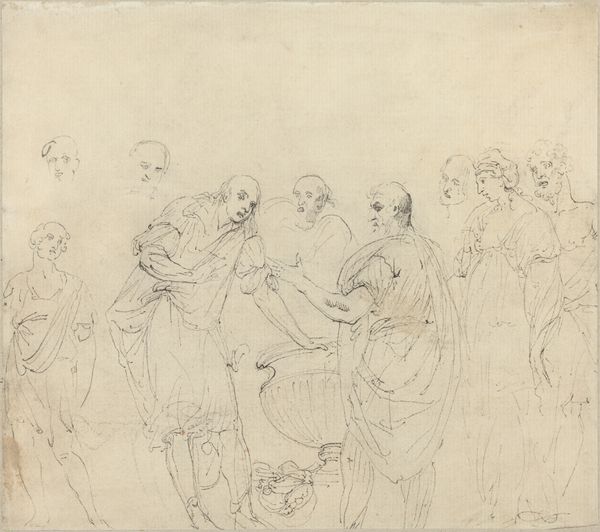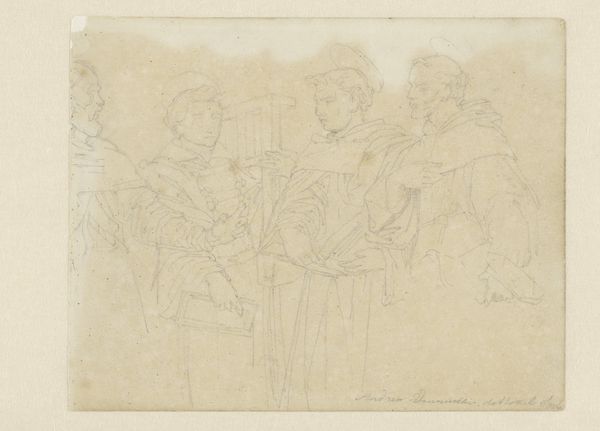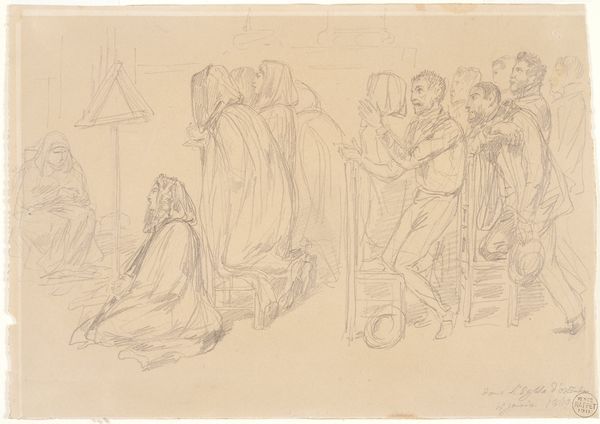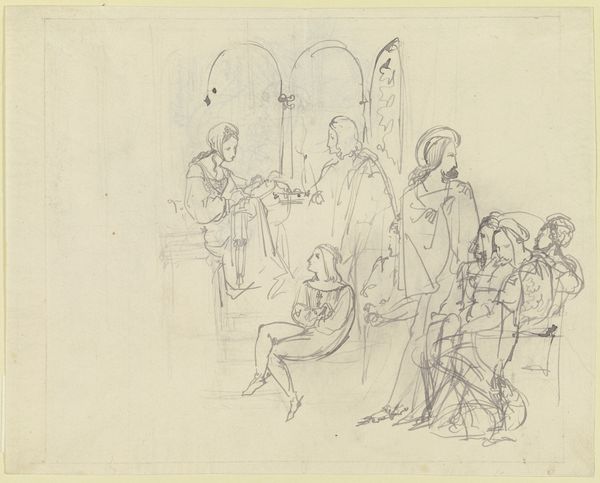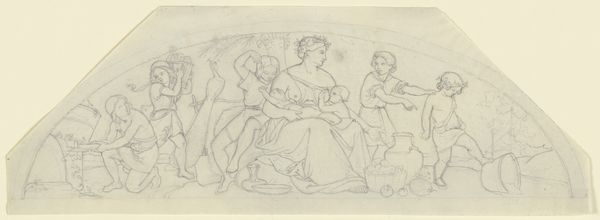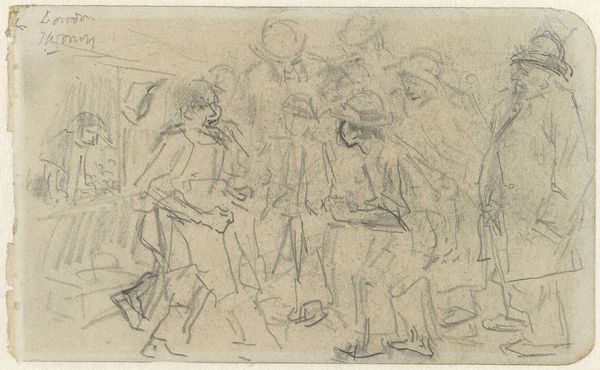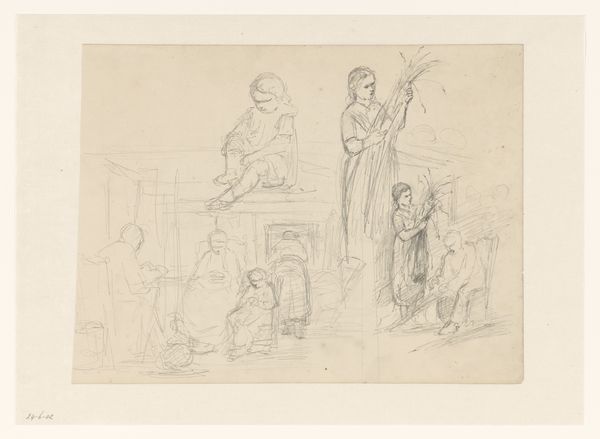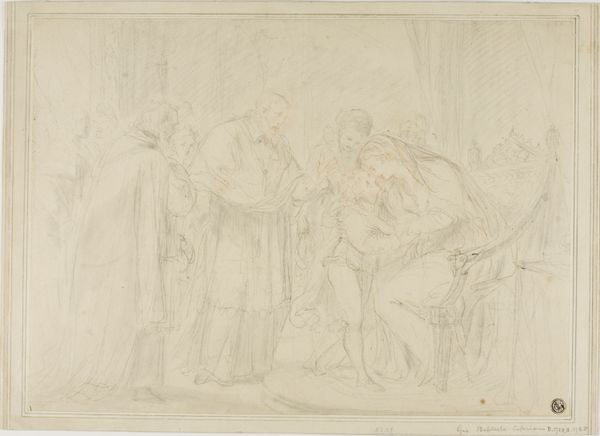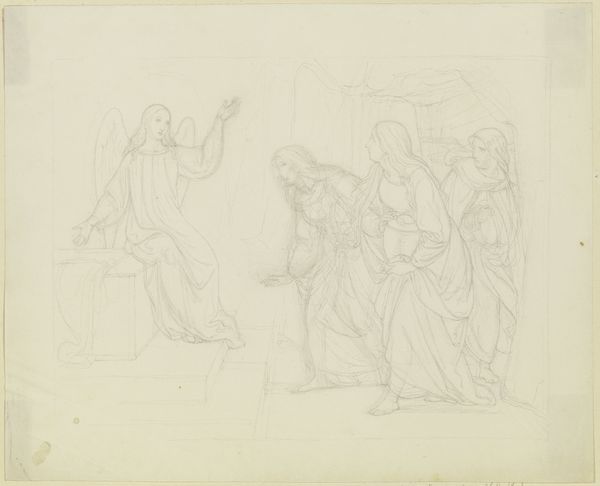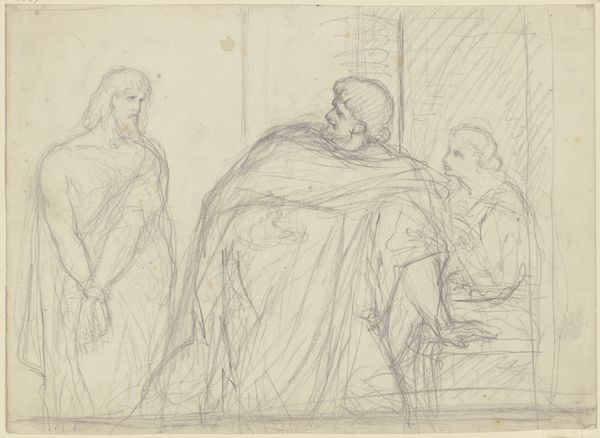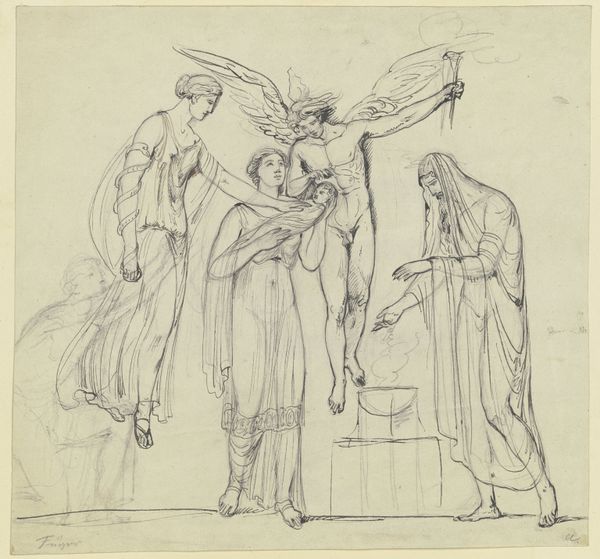
drawing, pencil
#
drawing
#
narrative-art
#
etching
#
figuration
#
romanticism
#
pencil
#
history-painting
Dimensions: overall: 28 x 40.5 cm (11 x 15 15/16 in.)
Copyright: National Gallery of Art: CC0 1.0
Curator: Here we have William Blake’s drawing, "Saint Augustine Converting King Ethelbert of Kent," dating back to around 1793, made with pencil and etching. Editor: My first impression is one of almost ghostly delicacy; the lines are so faint, and the composition seems ethereal, a scene almost glimpsed rather than firmly stated. Curator: Precisely. Given Blake's Romantic sensibility, think about the paper itself. It would have been a hand-made product. It shows a move towards creating narratives with meaning beyond immediate realities. Here, the production facilitates access into ethereal or mystical worlds. Editor: Yes, the cultural symbolism resonates so powerfully here. Ethelbert's conversion marks a critical point, a turning point from paganism. Note Saint Augustine: bearded, patriarchal, he embodies the imposition of a new order, signaled by his hand gesture which suggests both instruction and command. Curator: Considering this is a pencil and etching work, the materiality of Blake's media shows ingenuity of its time: mass culture meeting artistic production. And if we move past the protagonists and to the secondary players, they offer insights. They serve as signifiers: those behind Saint Augustine looking onward with belief and trust; and the other set showing disbelief in their conversion from paganism. Editor: And that interplay, the shifting allegiances hinted at by those faces, captures the psychological and social disruption caused by the shift in religious power. Their faces capture turmoil: concern, skepticism, resistance. Curator: It is fascinating, too, how Blake is engaging with this material and its message centuries after the event took place. You almost get the impression of how important cultural exchange, but especially craftwork production was during this era. Editor: Agreed. Seeing those emotions played out on the faces surrounding the key figures really pulls us into that pivotal, culture-altering moment in time. Curator: Indeed, and with all that being said, the convergence of materiality and social implication provides context, as you rightly said. The viewer becomes complicit to what lies within. Editor: Well, there’s power when a work captures not only an event, but its enduring reverberations in our shared consciousness, all within such a subtle piece of production.
Comments
No comments
Be the first to comment and join the conversation on the ultimate creative platform.

